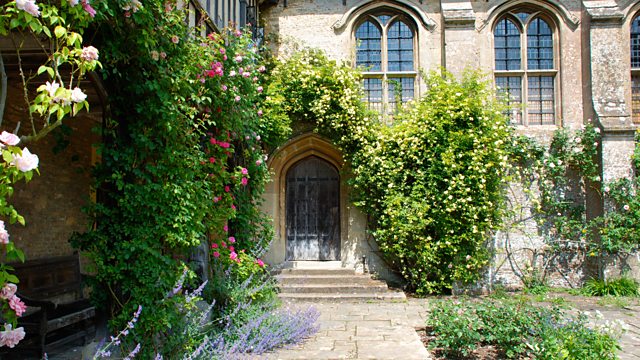Galleywood, Essex
Eric Robson chairs the horticultural panel programme from Galleywood, Essex. Chris Beardshaw, Christine Walkden and Matthew Wilson take questions from local gardeners.
Eric Robson is in the village of Galleywood, Essex. Chris Beardshaw, Christine Walkden and Matthew Wilson join him to answer the questions from local gardeners.
Also, Chris Beardshaw explores the gardens of Great Chalfield Manor used in the �������� adaptation of Wolf Hall and the team visit RHS Hyde Hall to share some topical tips.
Produced by Darby Dorras
Assistant Producer: Hannah Newton
A Somethin' Else production for �������� Radio 4.
Last on
More episodes
Previous
Next
Clip
-
![]()
Confessions of a Chelsea garden designer
Duration: 01:12
This week's questions and answers:
Q. I have been gifted a packet of wildflower seeds. How to I go about planting them?
A. Matthew - It will depend on what the packet comprises of. If it is a packet of cornfield annuals then they will need tilling every year in order to flower. They require their germination cycle to be broken. Naturally the plough would have done this, so in a garden you need to turn the ground. Scratch the surface with a fork and scatter your seeds across it.
Chris - Make sure the seed is still viable and has been stored in a cool, dry place.
��
Q. My Brassicas are plagued with Whitefly. How can I eradicate them?
A. Christine – you need to prevent them from reaching the plants in the first place. Create a frame and cover them with fleece. The flies and the plants are both waxy, so an insecticide tends to run off. You could also try sticky traps.
��
Q. My daughter is getting married on 6th June and we would like to use Sweet peas. I have already started some off in the autumn. Will they be ready in time?
A. Chris – Make sure you keep them in a frost-free environment for as long as possible.
Prepare the ground with plenty of organic matter but not too much nitrogen. Nitrogen increases the top growth and you won’t see as many flowers. Train them to five feet (5m) up a cane. Sweet peas do not like flexible structures. Take the top shoot and train it back down an adjacent cane to form an N-shape. You will get early blooms from side-shoots. They will require free-draining soil and full sun.
��
Q. What is the easiest way to propagate Coronilla glauca?
A. Christine – It is beautiful member of the pea family with yellow flowers. The best way is to harvest the seedpod when it has gone papery. Take it when green, as it will have the highest germination rate. If it goes brown, the germination rate drops to about 40%.
Matthew – There is a more compact version called Valentina with primrose yellow flowers. It is great in a border and is draught tolerant.
��
Q. I have two Daphne bushes. After nine years, one is still doing well whereas the other has gone yellow. What can I do to improve its condition?
A. Matthew – This looks like a case of Chlorosis. Daphnes are woodland plants and like moist but well drained soil with lots of compost. They won’t like a clay soil. Feed them with liquid sequestered iron. Think about improving the soil and giving the root as much room as possible.
Chris – Move it to the part of the garden where your other Daphne is thriving. They don’t mind being moved. If you want to wait until next year, dig a trench and back fill with sand. This will prepare it for transportation by severing the side roots.
��
Q. I have a Clematis Montana growing across my garage. It continues to spread but has never flowered.
A. Chris - I think it is actually Clematis vitalba which rarely flowers. It has a muted green leaf and has a relatively large gap between the fibrous stems. It is great to run through trees in a relaxed setting, but is not a specimen for a garden.
��
Q. Could the panel suggest some bee-friendly plants that the rabbits will hate?
A. Matthew – Firstly try netting the rabbits out. Rabbits don’t like the waxy leaves of the Euphorbia and bees will like the Euphorbia mellifera. Eremurus would also work and bees love them.
Chris – Try using Digitalis, especially the purpurea species. Eryngiums are prickly but be sure to plant them deep enough so that the rabbits don’t dig for the roots. Add something pungent to deter them from digging. Daffodils are toxic so will be left uneaten. Ulex would also work.
��
See more about the .
Broadcasts
- Fri 20 Feb 2015 15:00�������� Radio 4
- Sun 22 Feb 2015 14:00�������� Radio 4
Six of GQT’s naughtiest gardening innuendos
When Gardeners' Question Time got mucky.
Podcast
-
![]()
Gardeners' Question Time
Horticultural programme featuring a group of gardening experts




